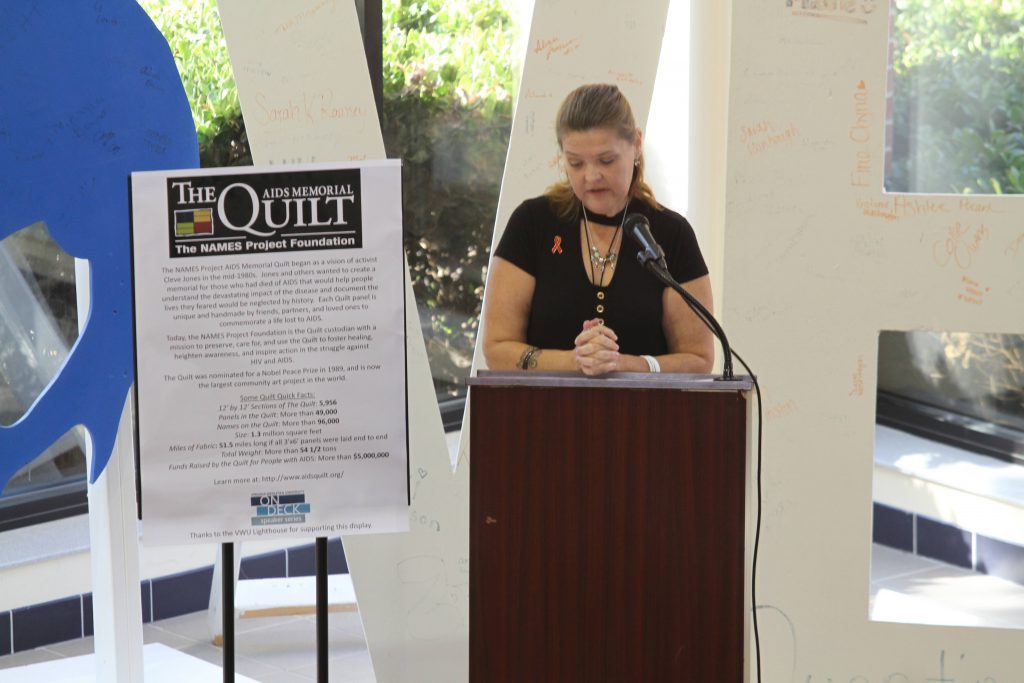 RAYVEN DAVIS
RAYVEN DAVIS
Community Editor
Series No. 1, A look at the difficulty of buying books for college students
It’s a joy to peel back the pages of a book and smell the new-book smell. But the experience loses some of its fun when you just paid for it using your minimum wage check from the last break from school. Every semester, students spend a chunk of money to purchase the books they need for their upcoming classes.
These books, however, do not just haunt our nightmares; they linger in the mind of Bookstore Manager Kimberly Brown.
Brown spends her time preparing for each semester and ensuring that the books will be available for students in the Scribner Bookstore when they arrive ready to learn.
The first step is as simple as getting the list of registered students from the Registrar and planning on ordering books according to those numbers.
“I order as many used books as I can for students; I use two different used-book companies,” said Brown.
“I send the master list of required textbooks for the semester out to the first company and they report back what books they have. Then, whatever is left I send to the second used book company and then they report back. And whatever they can’t fill I get from the familiar companies such as McGraw-Hill, Pearson, etc.”
As a student, Brown understands that book prices are a hot topic for students because they are one of the biggest expenses students have.
“Last semester I spent about $200 for a biology textbook. But, this semester I spent about $200 in total for my books,” says sophomore Sandra Leidl. “I realized I didn’t need to buy some textbooks and that helped.”
Many students have decided it is best to wait to purchase books.
“Waiting until the actual class can help” junior Jules Whitehurst says, “but the professor can schedule homework on the first day and if you don’t have your book yet it’s a problem.”
Many book distributors have begun attempting different forms of their books to encourage students to purchase them.
One form is the “loose leaf” text, which has pages that resemble loose-leaf paper and are able to be inserted into binders; this is virtually a copy of a hardback book, minus the hard cover.
“This affects the ‘Buy Back’ price at the end of the semester because you pretty much are getting that money off the top with your savings,” said Brown.
The ‘Buy Back’ price depends on the amount of use of the text throughout institutions, the condition of the text, and the edition.
“The edition of a book is a big deal because sometimes professors really encourage the newest edition and when you go to sell an older edition you don’t get the money back because it’s an outdated text,” said Brown.
“Buy Back representatives are always thinking ahead and what books they want vary depending on what books are really being utilized by professors and which are just sitting in a warehouse somewhere.”
Used books are sent back from the bookstore about 90 days after classes start and a few weeks later ‘Buy Back’ representatives are on campus.
“I didn’t do buy-back last semester because it really doesn’t give you a portion of the money you spend,” said Liedl.
Whitehurst said: “I think there should be more communication about the books. If we aren’t going to use the books for class then say that. Or if we aren’t going to use the entire book maybe offer the books in PDF form.”
Many professors differed in the way that they required their class materials, such as coursepacks, textbooks and complementary texts, to be formatted.
“I paid $80 for eight books and I used all of them; this semester I paid $300 for two books and I haven’t used them,” said freshman Jordana Costa. “Teachers should not allow you to buy books they won’t be using, and find more cost-effective books to teach with.”

